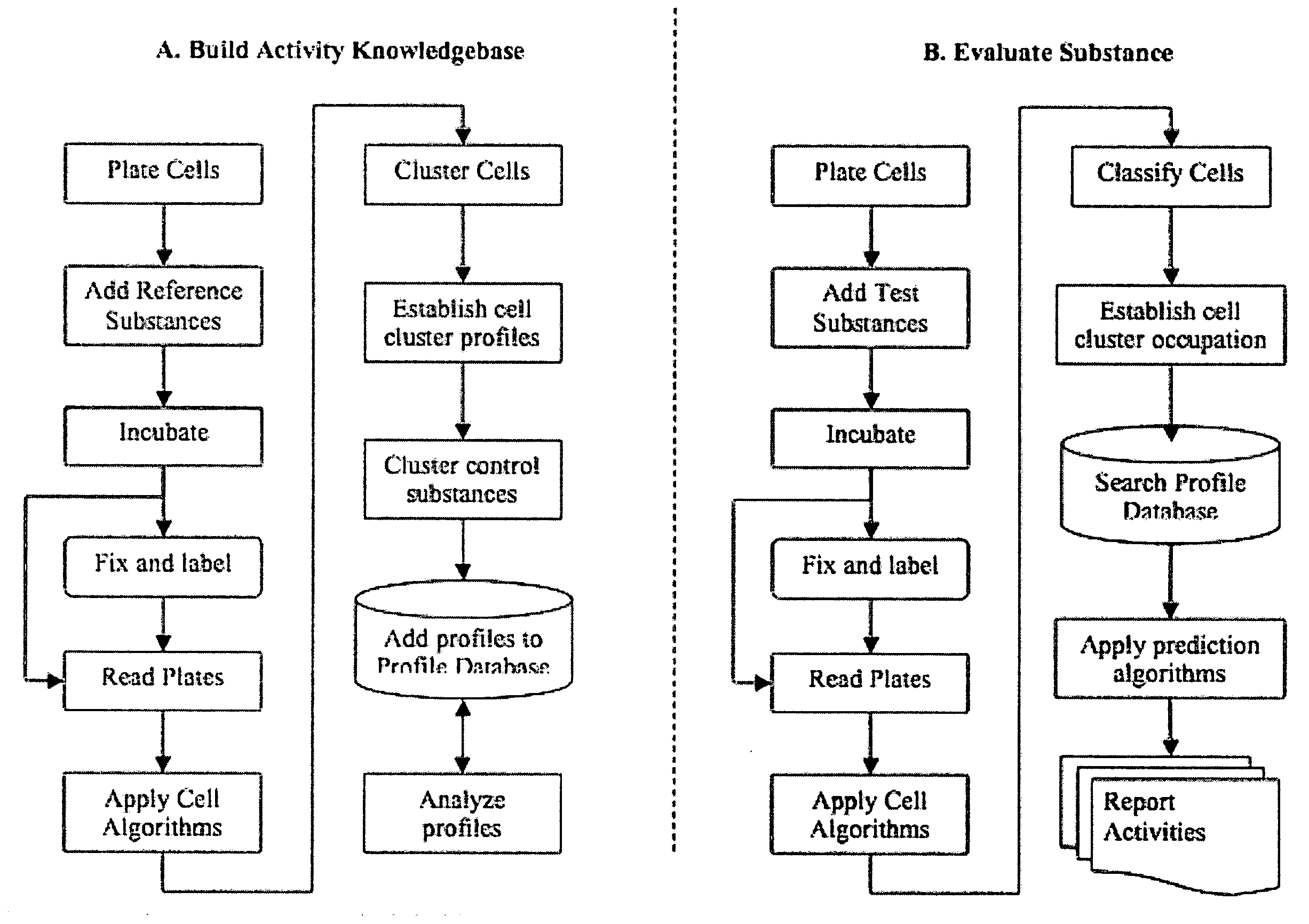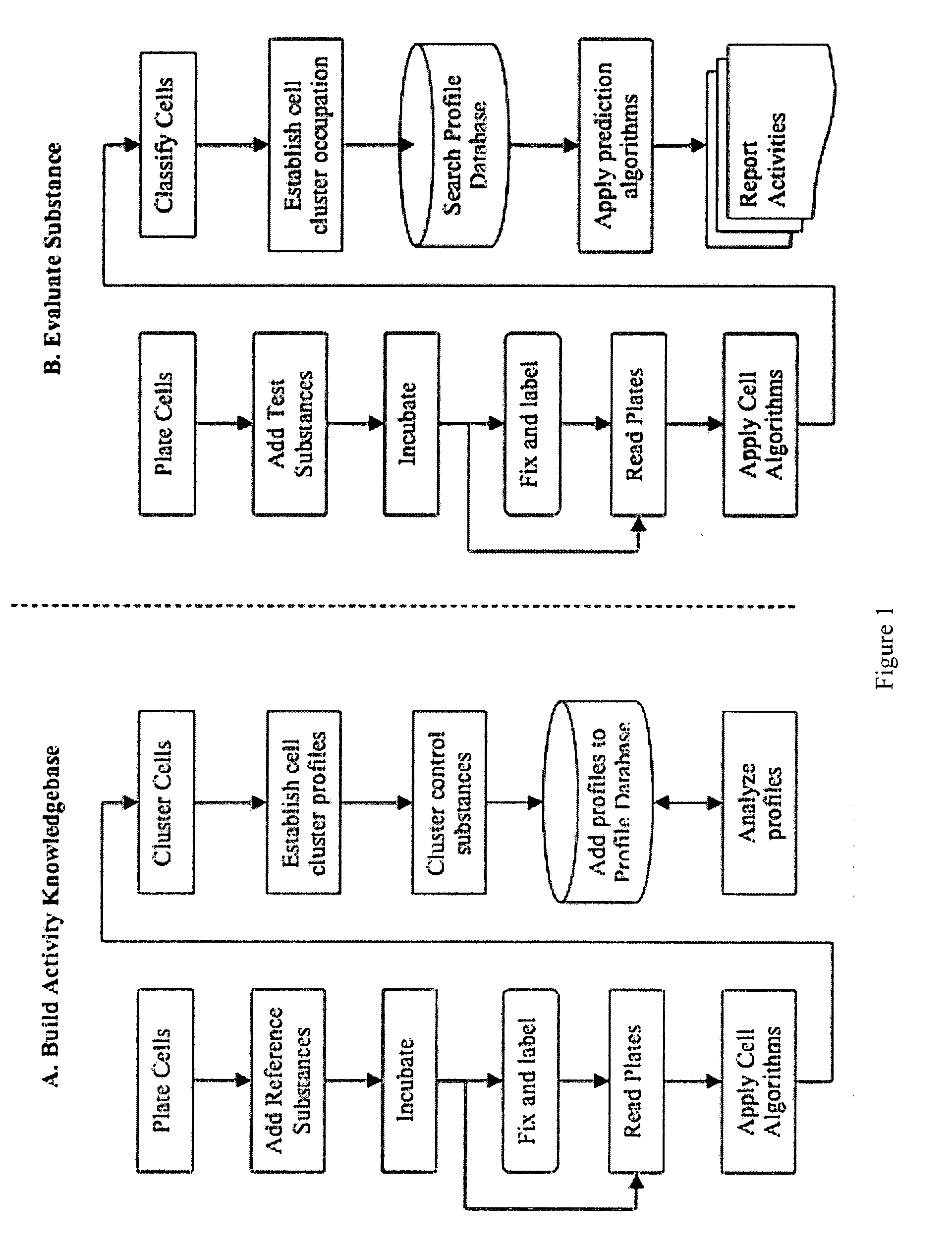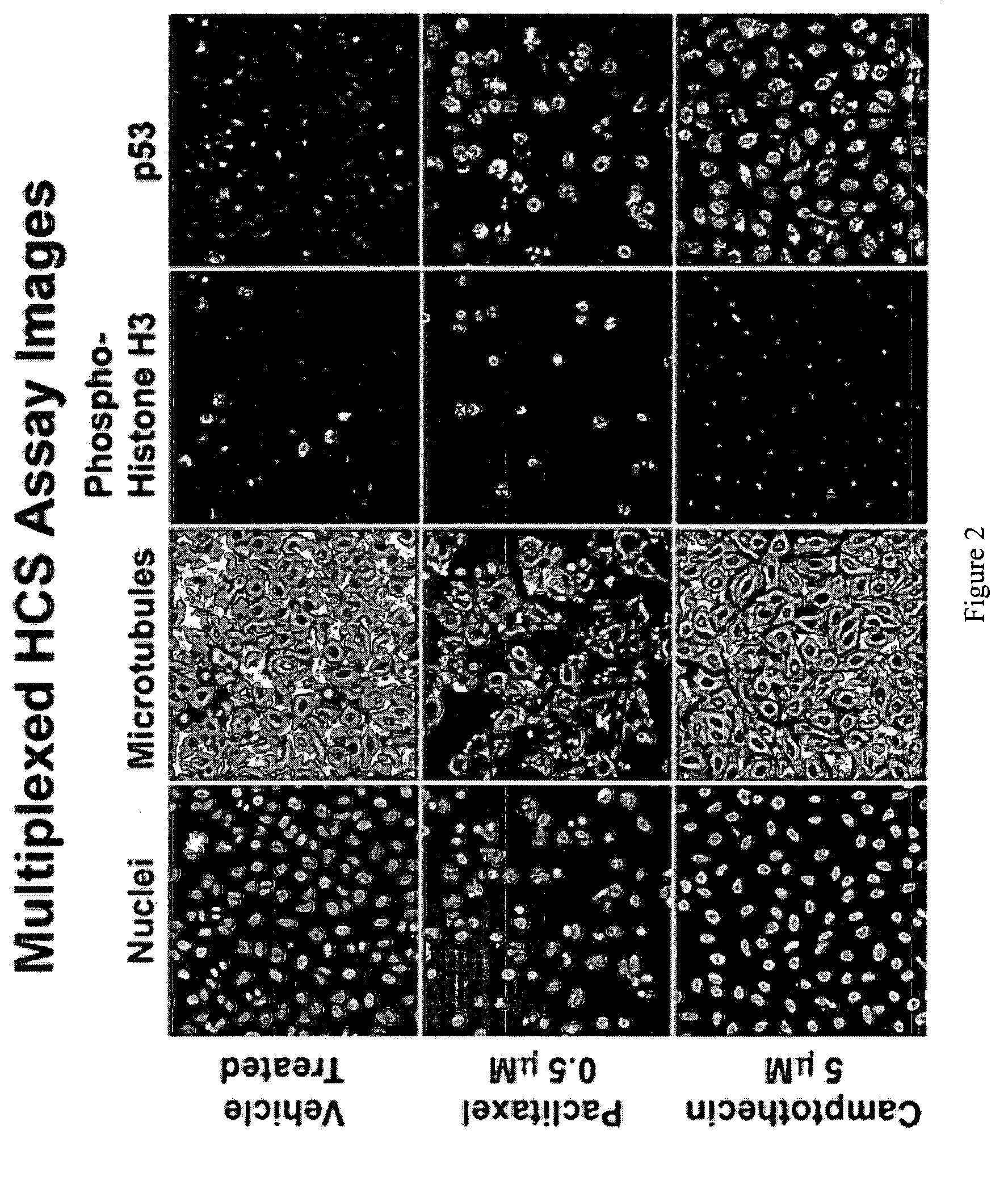Method For Predicting Biological Systems Responses
a biological system and biological system technology, applied in the field of biological system response prediction, can solve the problems of inefficiency that could be reduced, many candidate drugs fail, and limited customization of medical treatment through this approach
- Summary
- Abstract
- Description
- Claims
- Application Information
AI Technical Summary
Benefits of technology
Problems solved by technology
Method used
Image
Examples
example 1
[0049]This example demonstrates an embodiment of the invention in which a panel of assay function classes is used to profile substance toxicity.
[0050]The function classes to be assayed for toxicity include Stress Pathways, Organelle Function, Cell Cycle Stage, Morphology Changes, Apoptosis and DNA Damage. Some features that can be assayed in accordance with the inventive method to produce a knowledgebase or to assay a test compound are presented in the following Table 1 and also in FIG. 6.
TABLE 1Cellular Function ClassFeatureDNA damagei. Cell cycle regulation (DNA content anddegradation)ii. Nuclear morphologyiii. p53 protein activationiv. Rb protein phosphorylationv. Generation of 8-oxoguanine DNA damageproductvi. Oct1 transcription factor activationvii. Activation of DNA repair proteins(APE / ref-1)viii. Histone H2A.X phosphorylationChanges in phosphorylationi. ERKstate of stress kinasesii. JNKiii. p38iv. RSK90v. MEKApoptosis indicatorsi. DNA content and degradationii. Nuclear morpho...
example 2
[0054]This example demonstrates a multiplexed HCS toxicity profiling panel.
[0055]This panel suitably is performed in assays of multiple cell types. All panels include cell cycle regulation (e.g., assayed by DNA content and degradation) as a function class and nuclear morphology measurements. Additionally, the following features that can be assayed in accordance with the inventive method to produce a knowledgebase or to assay a test compound are presented in the following Table 3:
TABLE 3Cellular Function ClassFeatureApoptosis1. Mitochondrial mass2. Mitochondrial cytochrome c release3. Mitochondrial bax translocationCytoskeleton - stress kinase1. Actin cytoskeleton stability2. Microtubule cytoskeleton stability3. MAPK (ERK) activationNeurotoxicity1. Neurite outgrowth2. Microtubule cytoskeleton stability3. Mitochondrial mass4. Transcription factor activation (e.g.,NF-κB, ATF-2, or other)DNA damage response1. Histone H2A.X phosphorylation2. p53 protein activation3. Rb protein phosphoryl...
example 3
[0056]This example demonstrates the use of RNAi knockdowns to provide additional systems cell biology information on the toxic response of cells.
[0057]Specific siRNA pretreatments can be overlayed into multiplex HCS toxicity profile panels, such as set forth in examples 1 and 2. Pretreatment of the cells with Cdc2 siRNA (Catalog #42819; Ambion, Inc.; Austin, Tex.) induces a G2 cell cycle block that can be exploited in a test for altered compound toxicity (e.g., by assaying for inhibition of apoptosis-inducing activity). Potential implementations of this strategy include (a) cross panels of siRNAs with multiplexed HCS assays in a single cell type and (b) cross sets of cell types with multiplexed HCS assays using a single siRNA pretreatment.
PUM
| Property | Measurement | Unit |
|---|---|---|
| concentration | aaaaa | aaaaa |
| total volume | aaaaa | aaaaa |
| fluorescent | aaaaa | aaaaa |
Abstract
Description
Claims
Application Information
 Login to View More
Login to View More - R&D
- Intellectual Property
- Life Sciences
- Materials
- Tech Scout
- Unparalleled Data Quality
- Higher Quality Content
- 60% Fewer Hallucinations
Browse by: Latest US Patents, China's latest patents, Technical Efficacy Thesaurus, Application Domain, Technology Topic, Popular Technical Reports.
© 2025 PatSnap. All rights reserved.Legal|Privacy policy|Modern Slavery Act Transparency Statement|Sitemap|About US| Contact US: help@patsnap.com



